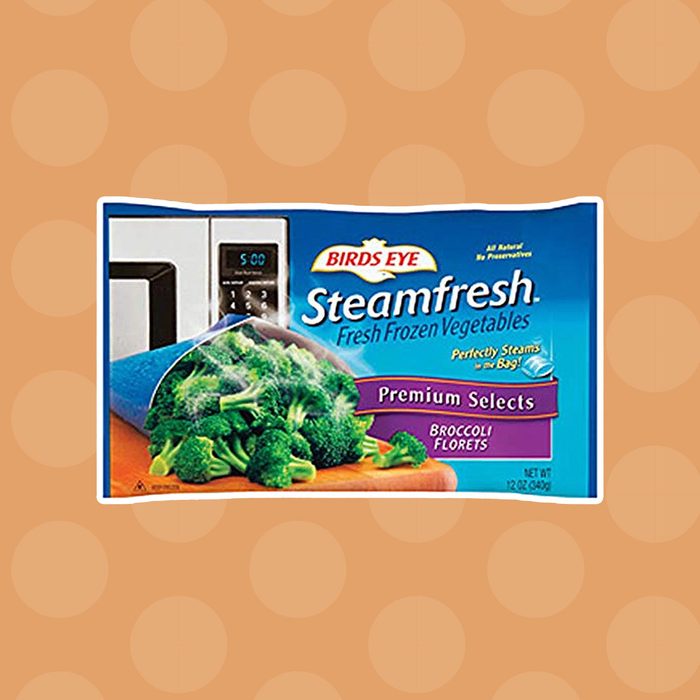
Vegetables
It’s not a shock that nutritionists love keeping frozen fruits and vegetables at home, but it’s still worth mentioning. For Deborah Malkoff-Cohen, MS, RD, CDN, CDE, keeping pre-chopped veggies in her fridge is one way to make sure she is always prepared to create healthy meals. But she also buys, chops and freezes whole, fresh vegetables based on what is available and budget-friendly. “I keep these to make homemade soups,” she says. “I add extra frozen vegetables like butternut squash, peas, broccoli, spinach; or anything spiralized whatever I have on hand.” Some of her favorite frozen vegetables include spinach, butternut squash, peas, broccoli and carrots. She even bulk-makes the soup and freezes it already made.
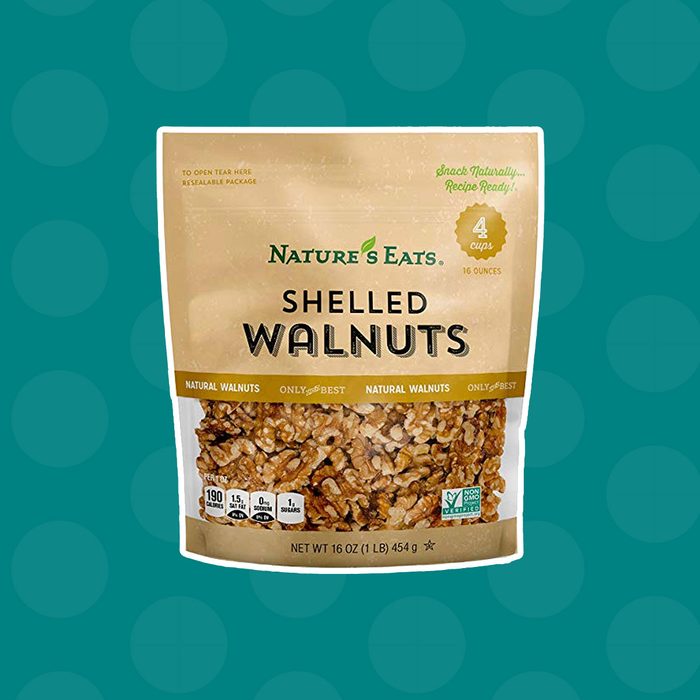
Nuts and seeds
Peanuts, almonds, walnuts, pistachios, and other nuts are nutritional powerhouses that are a fantastic source of plant-based protein, healthy fats, fiber, and vitamins and minerals, says Malina Linkas Malkani, MS, RDN, CDN, media spokesperson for the Academy of Nutrition and Dietetics. Keeping these nuts, as well as seeds in the freezer, however, is a little-known hack Malkani uses to keep them fresh. “Because of their high oil content, nuts and seeds can go rancid within a few weeks if not stored properly,” she says. “Freezing is a great option that helps me save money and prevent food waste.” The nuts freeze well for a year, or longer, in a well-sealed, freezer-safe container, Malkani says. She suggests adding them to smoothies, soups, stews, dips, casseroles, baked goods or using them to top salads and yogurt.
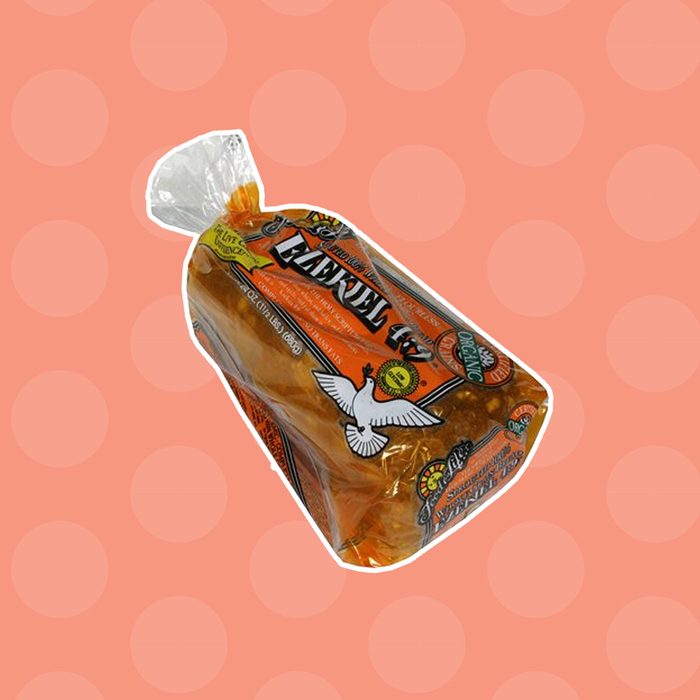
Bread
Frozen bread is a popular staple amongst nutritionists. Kris Sollid, RD, Senior Director of Nutrition Communications at the International Food Information Council Foundation, says he freezes everything from sandwich bread and English muffins to baguettes and bagels. Not only does freezing make the bread last longer, stretching your dollar, but it also doesn’t change the taste or consistency of the bread. Sollid tries to eat 100 percent whole wheat bread most of the time. “Whole grains provide fiber, which is good for health in many ways,” he says. “Fiber can help lower cholesterol, lower risk for certain types of cancer, improve blood sugar control, keep you feeling full for longer and, most importantly for some, relieve constipation.” Most Americans eat only half the recommended amount—38 grams for men and 25 grams for women—per day, Sollid says.
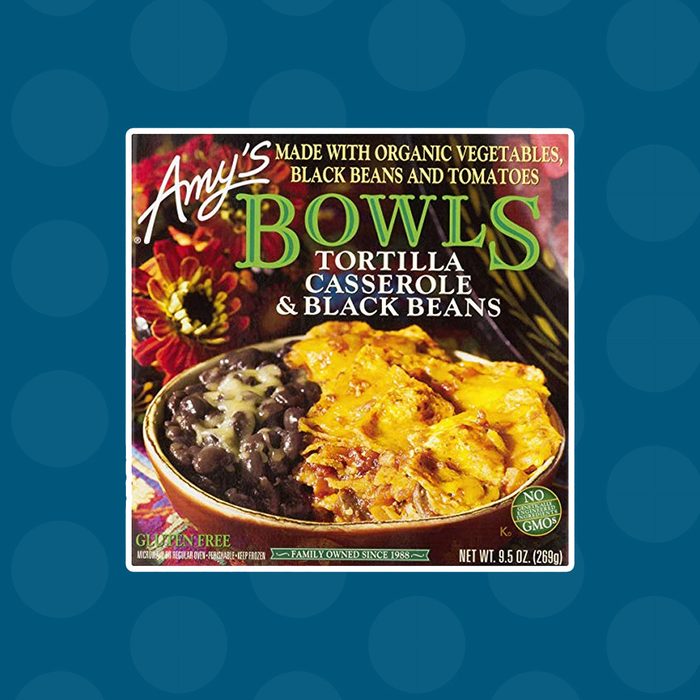
Amy’s Kitchen meals
Carol Aguirre, MS, RD/LDN recommends Amy’s Kitchen products for anyone who wants to be more health conscious. Their food is from certified-organic farms, offers no hydrogenated fats, eggs, meat, fish, shellfish, poultry or peanuts. “My favorite is the Vegan Spinach Ravioli Bowl,” she says. There are 12 grams of protein, five grams of fiber and one and a half grams of saturated fat per bowl. “This is a great option for a work lunch meal, and you can read and pronounce all the ingredients,” she adds. Sometimes Aguirre adds veggies to get more antioxidants in the meal. These are the 13 nutrients even nutritionists don’t get enough of.
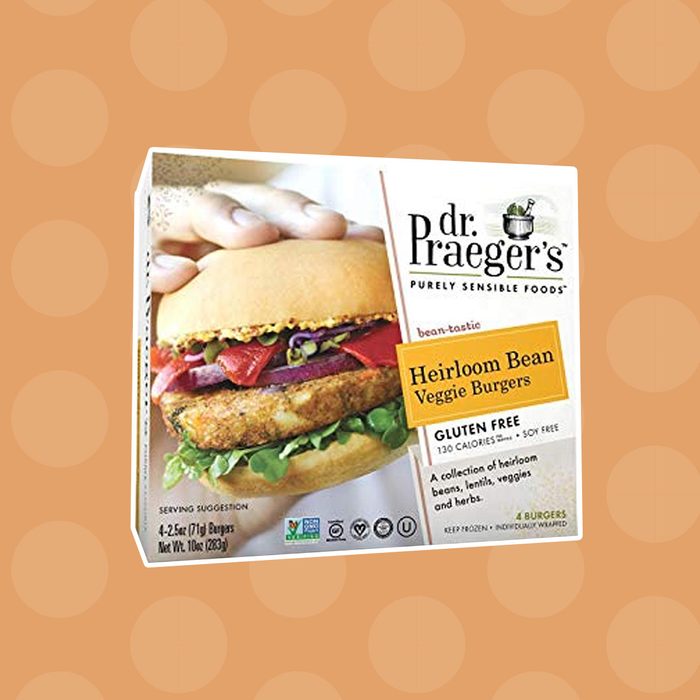
Dr. Prager’s meals
This brand offers a hearty breakfast bowl that’s a great start for your morning thanks to the high protein content, Aguirre says. “There’s no excuse to skip breakfast,” she says. “This breakfast bowl has 270 calories, 12 grams of protein and 450 milligrams of sodium.” The high-quality protein will keep you alert and energized first thing in the morning.
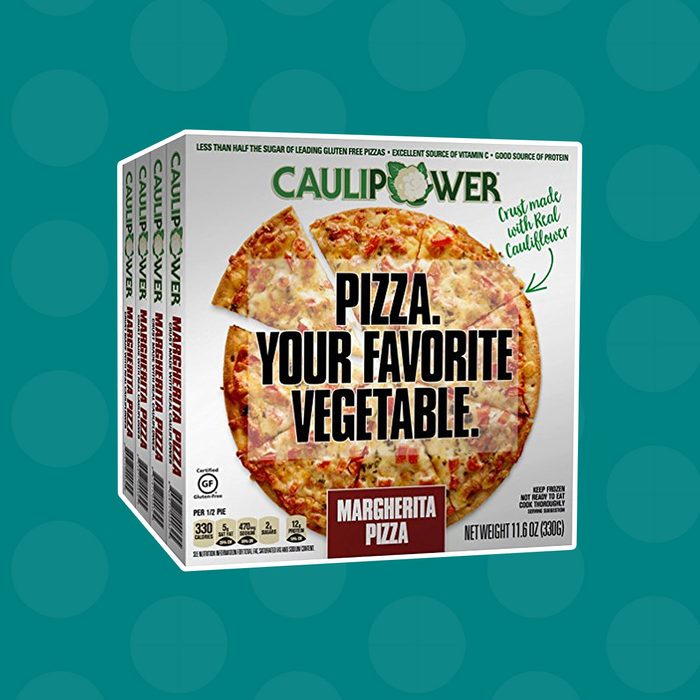
Caulipower pizza
Caulipower offers frozen gluten-free, cauliflower pizza crusts that are a great alternative to a traditional pie thanks to fewer calories. “I usually add broccoli, bell peppers and onions on top of the pie to increase the veggie and antioxidant content,” Aguirre says. “I also add lean chicken to increase the protein content.” For half a Caulipower pie, there are 12 grams of protein, 5 grams of saturated fat, 3 grams of fiber and 470 milligrams of sodium. Here are some foods nutritionists eat every day—and you should too!.
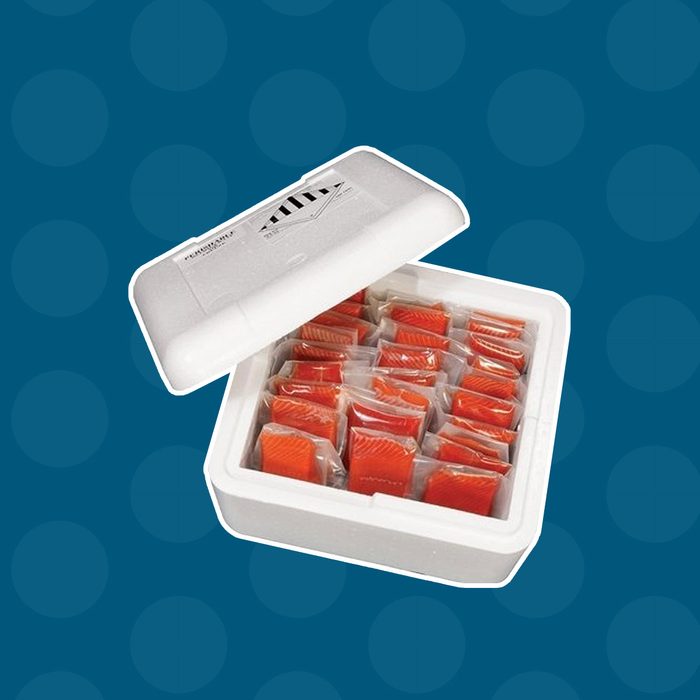
Proteins
Freezing, or buying pre-frozen proteins, is a great way to save time and money on meal prep. Malkoff-Cohen makes lean turkey meatballs and meat sauce in bulk and freezes it for the week. She buys frozen wild salmon and shrimp, too. “The wild salmon I take out the night before to defrost and bake in the oven,” she says. “Shrimp is so easy to just stir-fry with veggies.”
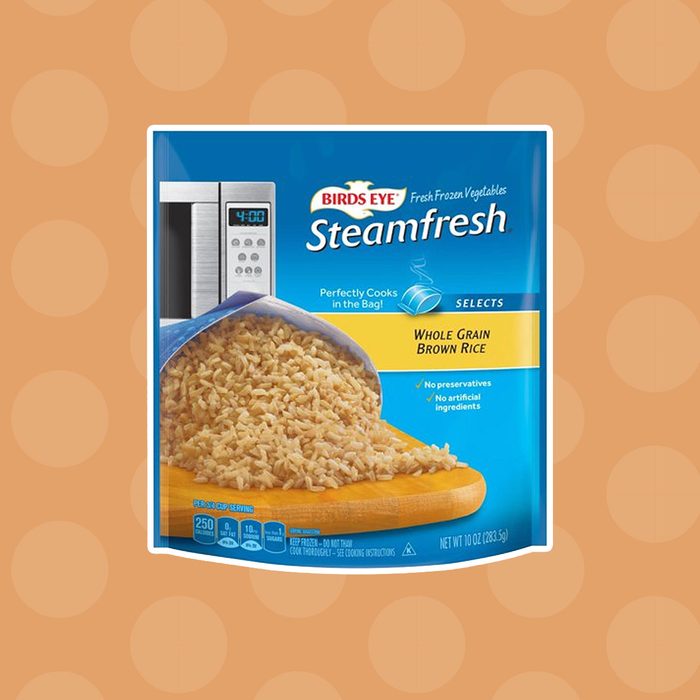
Rice
Celebrity dietitian Lisa DeFazio, MS, RD, buys steam bags of frozen rice to make for a quick car side dish. “Rice is a great source of whole grains and carbohydrates, but takes a while to make,” she says. “Frozen rice is just as nutritious and ready in minutes.”
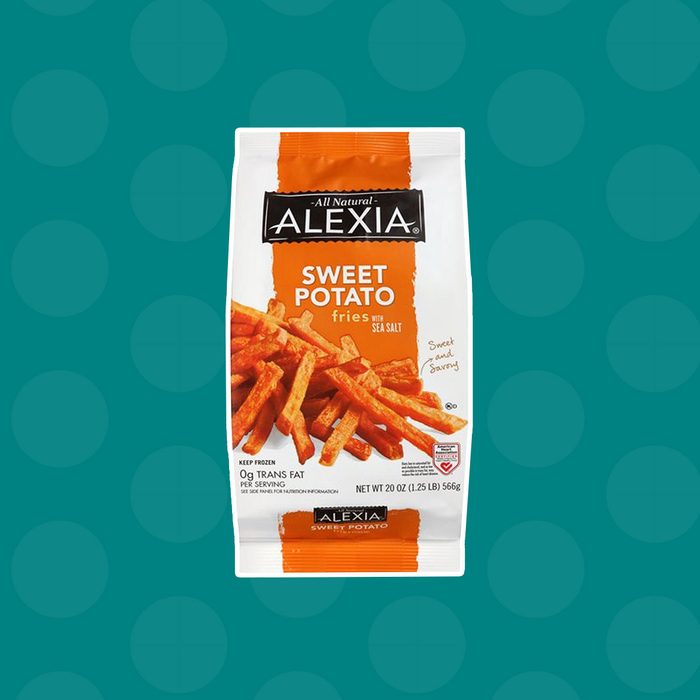
Fries
Yes, fries can be part of a healthy diet. DeFazio likes the Alexia frozen sweet potato fries for a healthy side dish since they are both tasty and healthy. These all natural fries are made with sea salt and are ready in 20 minutes.
Every product is independently selected by our editors. If you buy something through our links, we may earn an affiliate commission.